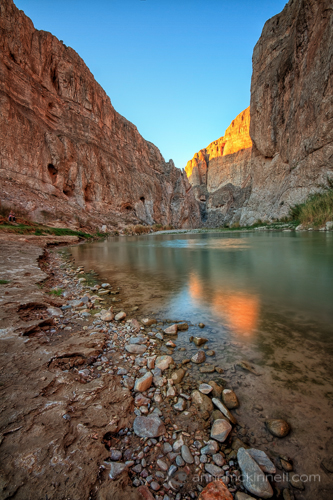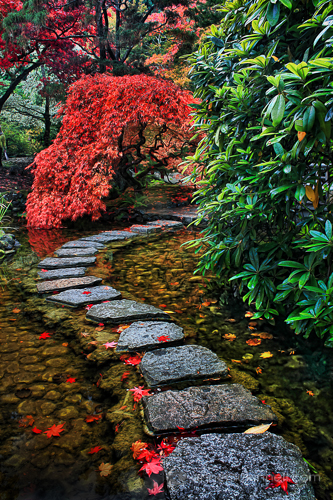How to Use Leading Lines for Better Compositions
A leading line paves an easy path for the eye to follow through different elements of a photo. Usually they start at the bottom of the frame and guide the eye upwards and inwards, from the foreground of the image to the background, typically leading toward the main subject.
The easiest place to find a leading line is on a road. Roadways are inherently leading because they go somewhere, give us a feeling of motion, and the lines often point so far inwards that they reach a vanishing point – the place where two or more lines converge into theoretical infinity.

The leading lines of the road converge to create a sense of infinity.
When leading lines, such as roads, connect the foreground to the background of a scene, they help to create depth and dimensionality which draws the viewer into the image.
Leading lines are all around us in cities and in nature. Your job as the photographer is to find them and arrange them in your photograph so that they lead towards something, even if that something is infinity.

The logs on the beach draw the viewer’s eye into the frame and lead up to the house.
When you’re setting up a shot, take a moment to examine the scene for its prominent lines. Clear your mind, relax your eyes, and notice where they are naturally drawn to.
Pay special attention to man-made things such as:
|
In nature, pay particular attention to:
|

The soft leading line of the river’s edge creates depth in the image.
Once you’ve identified your strongest lines, consider how you can use them to enhance your composition. Depending on your intention, you might:
- create depth and perspective by positioning a strong line leading from the foreground to the background;
- create a visual journey from one part of your image to another;
- place your subject where the lines converge to give the subject more importance in the frame and draw the viewer’s attention directly to it; or
- make a cyclical composition, with the lines leading the eye in a circular motion and never out of the frame.
Arranging the elements in the frame may involve the use of different lenses to change perspective, but usually you can accomplish it simply by moving yourself so that the point of view you choose is purposeful.

The leading line of the path leads the eye directly to the maple tree.
Leading lines are the key compositional element that carries our eye through the photograph. They can be used to tell a story, to place emphasis, and to draw a connection between two objects.

Very informative..
ReplyDelete